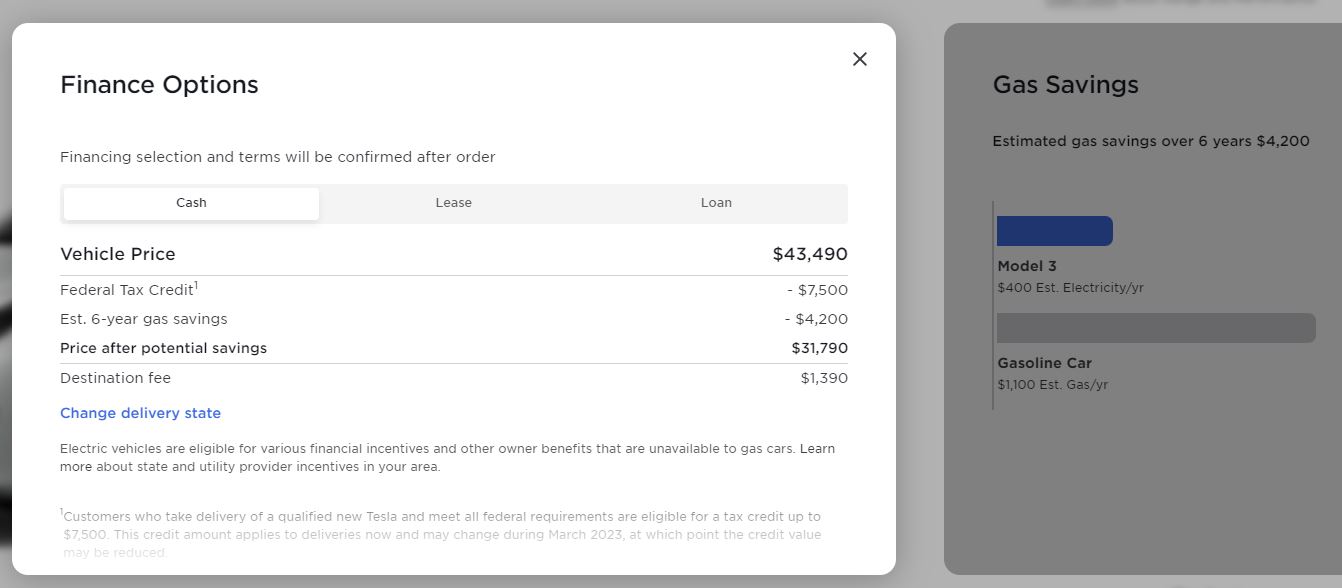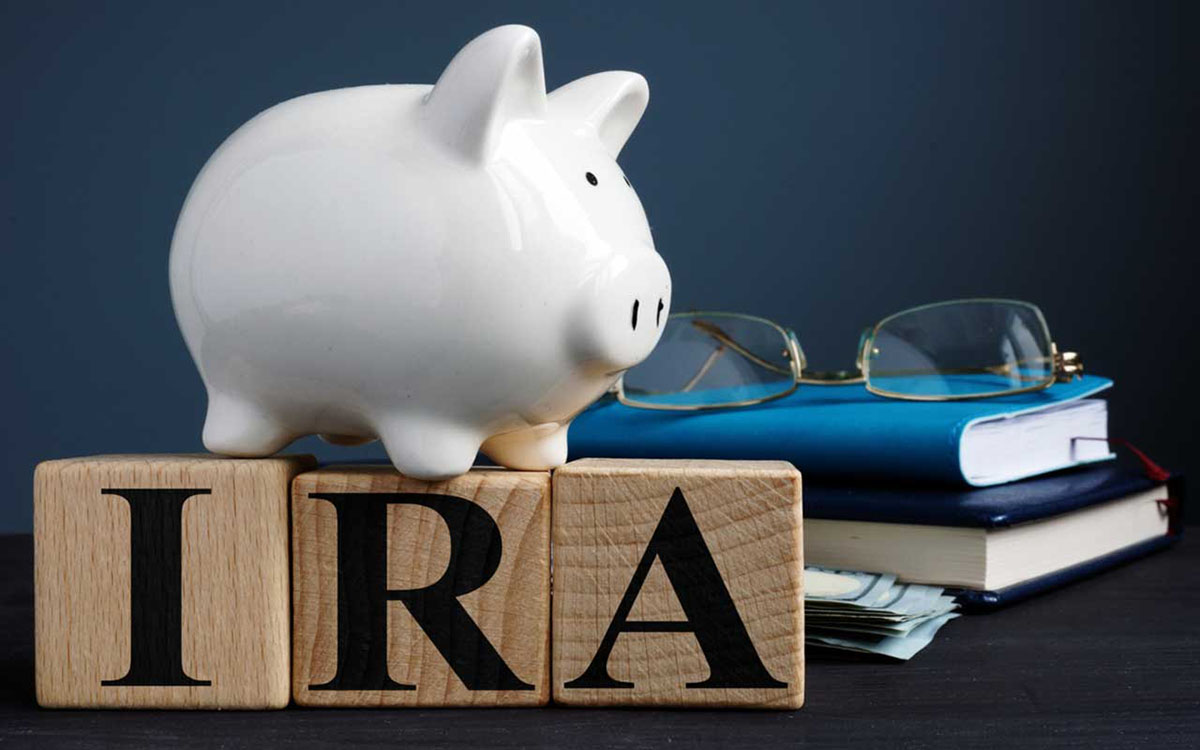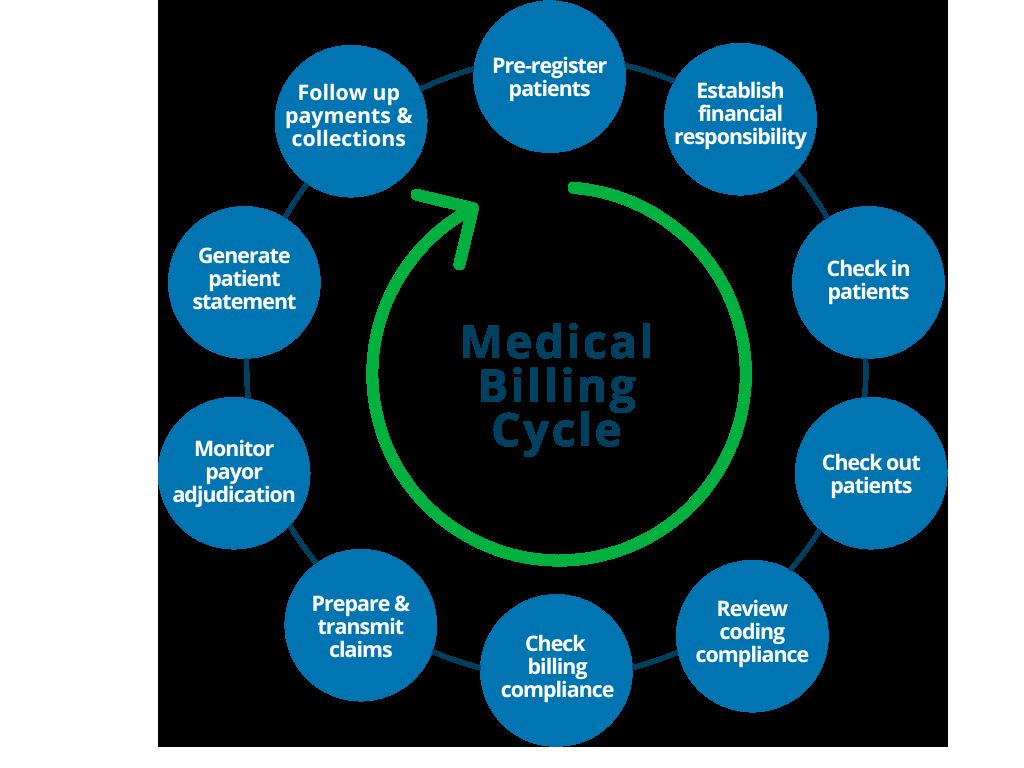

Finance
What Is Cost Savings
Published: January 16, 2024
Discover the importance of cost savings in finance and learn effective strategies to save money and maximize your financial resources. Improve your financial stability and achieve your financial goals with smart cost-saving techniques.
(Many of the links in this article redirect to a specific reviewed product. Your purchase of these products through affiliate links helps to generate commission for LiveWell, at no extra cost. Learn more)
Table of Contents
Introduction
Welcome to our comprehensive guide on cost savings. In this article, we will explore the concept of cost savings and its importance in the world of finance. Whether you are a business owner, an individual looking to manage your personal finances, or simply someone interested in learning more about the topic, this article is for you.
Cost savings refer to the reduction, elimination, or avoidance of expenses. It is a fundamental principle in financial management that focuses on optimizing resources to achieve financial goals. By implementing effective cost-saving strategies, businesses and individuals can improve their financial health, increase profitability, and enhance their overall financial well-being.
Cost savings can be achieved through various means, such as cutting unnecessary expenses, negotiating better deals with suppliers, streamlining operations, improving efficiency, and adopting cost-effective technologies. It requires a proactive approach, strategic planning, and a keen eye for identifying areas of potential savings.
The importance of cost savings cannot be overstated. For businesses, it can mean the difference between survival and bankruptcy. By reducing expenses, companies can lower their operating costs, increase their profit margins, and reinvest the savings into growth initiatives or other strategic areas of the business. Similarly, for individuals, cost savings can lead to financial stability, more disposable income, and a greater ability to achieve long-term financial goals.
With the ever-increasing cost of living, economic uncertainties, and fluctuating market conditions, being able to effectively manage expenses and save money has become even more critical. It allows businesses and individuals to build financial resilience, withstand financial shocks, and have greater control over their financial destinies.
Throughout this article, we will delve deeper into the factors that influence cost savings, explore various strategies for achieving cost savings, examine the benefits of cost savings, and highlight some successful case studies. We will also discuss the challenges faced in implementing cost savings and provide best practices for ensuring cost savings. By the end of this guide, you will have a comprehensive understanding of cost savings and be armed with valuable insights to help you optimize your finances.
So, let’s begin our journey into the world of cost savings and discover how it can transform your financial outlook.
Definition of Cost Savings
Cost savings refer to the reduction, elimination, or avoidance of expenses, resulting in a decrease in overall costs. It is a financial strategy that aims to optimize resources and improve financial performance by identifying and implementing cost-effective measures.
Cost savings can be achieved by analyzing and evaluating expenses, identifying areas of inefficiency or waste, and implementing strategies to reduce or eliminate unnecessary costs without sacrificing the quality or functionality of the goods or services being provided.
It is important to note that cost savings should not be confused with cost cutting or cost reduction. While cost cutting focuses on reducing costs without considering the long-term implications, cost savings take a more comprehensive approach. It involves a systematic and strategic evaluation of expenses to identify opportunities for sustainable savings.
There are two main types of cost savings:
- Direct cost savings: These cost savings are tangible and easily measurable. They involve actions such as negotiating better deals with suppliers, optimizing inventory management, and reducing wastage. Direct cost savings directly impact the bottom line and can result in immediate financial gains.
- Indirect cost savings: These cost savings are not as easily quantifiable but still contribute to overall cost reduction. They involve actions such as improving operational efficiency, streamlining processes, and implementing cost-effective technologies. Indirect cost savings may require initial investments but can lead to long-term cost optimization and improved financial performance.
It is important to approach cost savings as a continuous process rather than a one-time effort. This involves regularly reviewing and evaluating expenses, identifying opportunities for improvement, and implementing cost-saving measures on an ongoing basis.
By effectively managing costs and implementing cost-saving strategies, businesses and individuals can achieve financial stability, improve profitability, and have more resources to allocate towards growth and other strategic initiatives.
In the next sections, we will explore the importance of cost savings and the factors that influence it, providing you with a comprehensive understanding of how cost savings can positively impact your financial health.
Importance of Cost Savings
Cost savings play a crucial role in the world of finance, both for businesses and individuals. Here are some key reasons why cost savings are important:
- Financial stability: Cost savings contribute to financial stability by providing a buffer against unforeseen expenses and economic downturns. An effective cost savings strategy ensures that there are funds available to cover unexpected costs, emergencies, or periods of decreased income.
- Increased profitability: By reducing expenses, businesses can increase their profit margins. Cost savings allow businesses to generate more revenue from their existing resources, resulting in higher profitability. This additional profit can then be reinvested in the business for expansion, innovation, or to improve competitiveness.
- Competitive advantage: Cost savings can give businesses a competitive edge in the marketplace. By operating more efficiently and having lower costs than competitors, businesses can offer products or services at more competitive prices, attracting more customers and gaining a larger market share.
- Long-term financial goals: Cost savings provide the financial resources needed to achieve long-term goals. Whether it is saving for retirement, purchasing a home, or starting a business, having a solid cost savings strategy in place ensures that funds are available to invest in these future endeavors.
- Flexibility and adaptability: Cost savings grant businesses and individuals greater flexibility and adaptability in managing financial challenges. They provide a financial cushion to weather economic uncertainties, industry disruptions, or changes in personal circumstances.
Furthermore, cost savings can have a positive impact on society and the environment. By reducing wasteful practices and implementing sustainable cost-saving measures, businesses can contribute to a greener and more sustainable future.
It is essential to recognize that the importance of cost savings extends beyond just cutting costs. It is about optimizing resources, improving efficiency, and making informed financial decisions. Implementing a cost savings mindset and adopting cost-effective practices can lead to long-term financial growth, stability, and success.
In the following sections, we will explore the factors that influence cost savings and provide strategies for achieving effective cost savings.
Factors Influencing Cost Savings
Several factors contribute to the overall success of cost savings initiatives. Understanding these factors is crucial for developing effective strategies and maximizing cost-saving opportunities. Here are some key factors that influence cost savings:
- Expense analysis: Conducting a comprehensive analysis of expenses is the first step in identifying cost-saving opportunities. Examining all expenditures, both direct and indirect, helps to uncover areas of inefficiency or overspending. It provides insight into where savings can be made without compromising on quality or functionality.
- Market conditions: Market conditions greatly influence the availability and cost of resources. Monitoring market trends, pricing fluctuations, and supplier relationships enables businesses and individuals to take advantage of favorable market conditions and negotiate better deals. Timing purchases and contracts strategically can lead to significant cost savings.
- Technological advancements: Technological advancements often provide opportunities for cost savings. Embracing digital solutions, automation, and innovative technologies can streamline operations, reduce manual labor costs, and optimize resource utilization. Technology also offers cost-effective communication and collaboration tools, reducing the need for physical infrastructure and travel expenses.
- Operational efficiency: Improving operational efficiency is a key driver of cost savings. Streamlining processes, eliminating bottlenecks, improving workflow, and optimizing resource allocation all lead to reduced costs. By focusing on productivity and efficiency, businesses can minimize waste, reduce rework, and achieve overall cost savings.
- Energy and resource management: Effective management of energy consumption and resource utilization can result in substantial cost savings. Implementing energy-saving measures, such as using energy-efficient equipment and adopting sustainable practices, not only reduces expenses but also contributes to environmental sustainability.
- Supplier relationships: Building strong relationships with suppliers is crucial for achieving cost savings. Negotiating favorable terms, volume discounts, and long-term contracts can lead to cost reductions. Leveraging supplier expertise and exploring alternative sourcing options can also help in finding cost-effective solutions.
- Employee engagement: Engaging employees in cost-saving initiatives can have a significant impact. Encouraging employees to suggest cost-saving ideas, providing training on cost-conscious behaviors, and rewarding cost-saving efforts can foster a culture of cost savings within organizations. Employees who are aware of the importance of cost savings can play an active role in reducing expenses.
It is important to note that the factors influencing cost savings may vary depending on the industry, business size, and individual circumstances. Conducting a thorough analysis of these factors will help in tailoring cost-saving strategies to specific needs and maximizing the potential for savings.
In the next section, we will explore strategies for achieving effective cost savings, providing actionable insights that can be implemented to optimize financial resources.
Strategies for Achieving Cost Savings
Implementing effective strategies is key to achieving cost savings. With a proactive approach and a focus on optimizing resources, businesses and individuals can successfully reduce expenses. Here are some strategies to consider:
- Expense evaluation: Start by thoroughly evaluating all expenses. Identify areas of unnecessary or excessive spending, and prioritize cost-saving opportunities.
- Negotiating with suppliers: Build strong supplier relationships and negotiate favorable terms. Seek volume discounts, explore alternative sourcing options, and regularly review supplier contracts to ensure you are getting the best value for your money.
- Streamlining operations: Analyze workflows and identify areas of inefficiency. Streamline processes, eliminate bottlenecks, and reorganize resources to optimize productivity and reduce costs.
- Implementing cost-effective technologies: Embrace technology solutions that can automate tasks, improve efficiency, and reduce manual labor costs. Whether it’s adopting cloud-based systems, implementing inventory management software, or using energy-saving equipment, technology can significantly contribute to cost savings.
- Energy and resource conservation: Implement sustainable practices to reduce energy consumption and resource waste. Encourage employees to adopt energy-saving habits, such as turning off lights and equipment when not in use, and consider investing in energy-efficient appliances and office infrastructure.
- Employee engagement: Engage employees in cost-saving efforts by creating a culture of cost consciousness. Encourage employees to suggest cost-saving ideas, provide training on cost-effective practices, and reward employees for their contributions to cost savings.
- Optimizing inventory management: Avoid overstocking or understocking products by implementing effective inventory management practices. Regularly review purchasing patterns and optimize inventory turnover to prevent unnecessary holding costs or lost sales opportunities.
- Reviewing subscriptions and services: Regularly review subscriptions, memberships, and services to ensure they align with current needs. Cancel or renegotiate agreements for unused or redundant services, and explore cost-effective alternatives.
- Outsourcing: Consider outsourcing non-core functions and tasks to specialized vendors. Outsourcing can reduce overhead costs, increase efficiency, and provide access to expertise at lower costs than in-house operations.
- Monitoring and benchmarking: Continuously monitor expenses and track key performance indicators to identify areas of improvement. Benchmarking against industry standards and competitors can provide insights into potential cost-saving opportunities.
Remember, cost savings is an ongoing process. Regularly review and reassess your cost-saving strategies, adapt to changing market conditions, and continually search for innovative solutions to optimize resources and reduce expenses.
In the next section, we will explore the benefits of cost savings, highlighting the positive impact it can have on businesses and individuals.
Benefits of Cost Savings
Cost savings bring numerous benefits to both businesses and individuals. By implementing effective cost-saving strategies, you can experience significant positive impacts on your financial health and overall well-being. Here are some key benefits of cost savings:
- Improved financial stability: Cost savings play a crucial role in providing financial stability. By reducing expenses and building up savings, businesses and individuals can create a financial cushion to handle unexpected costs, economic downturns, or personal emergencies.
- Increased profitability: One of the most apparent benefits of cost savings is increased profitability. By lowering expenses, businesses can improve their profit margins and increase their bottom line. This extra profit can be reinvested in growth initiatives, research and development, or expansion into new markets.
- Enhanced competitiveness: Cost savings enable businesses to offer competitive prices for their products or services. By reducing costs, businesses can lower their prices while maintaining a reasonable profit margin. This helps attract more customers and gain a competitive edge in the market.
- Financial flexibility: Implementing cost-saving strategies provides financial flexibility. Having more resources available allows businesses and individuals to make strategic decisions, respond to market changes, and seize opportunities for growth. It also allows for the allocation of funds toward research and development, marketing, or other strategic initiatives.
- Long-term financial goals: Cost savings help businesses and individuals achieve their long-term financial goals. Whether it is saving for retirement, purchasing a new property, or starting a business, having a robust cost-saving strategy in place ensures that you have the funds necessary to achieve these goals.
- Reduced financial stress: Financial worries can take a toll on mental and emotional well-being. By implementing effective cost-saving measures, individuals can reduce financial stress and achieve peace of mind. Similarly, businesses can alleviate financial pressure and create a more positive work environment for their employees.
- Sustainable practices: Cost savings often involve adopting sustainable practices. By reducing waste, optimizing resource utilization, and embracing energy-saving measures, businesses and individuals can contribute to a more environmentally friendly and sustainable future.
- Investment opportunities: Accumulating cost savings provides the opportunity to invest in areas that will generate additional income. Whether it is investing in the stock market, real estate, or business ventures, having savings allows for diversification and potential wealth creation.
Ultimately, cost savings provide financial security, enable growth and innovation, and positively impact the bottom line. By prioritizing cost-saving initiatives and implementing effective strategies, businesses and individuals can experience a wide range of benefits that contribute to their financial success and overall well-being.
In the next section, we will explore real-life case studies of successful cost savings implementations, providing practical examples of how businesses have achieved significant savings.
Case Studies on Successful Cost Savings
To understand the real-world implications and benefits of cost savings, let’s explore some case studies of businesses that have successfully implemented cost-saving initiatives:
- Case Study 1: Company XYZ
Company XYZ, a manufacturing company, identified a significant opportunity for cost savings by implementing lean manufacturing principles. By analyzing their manufacturing process and eliminating waste, they were able to reduce production time and cut down on material costs. This resulted in a 15% decrease in overall production costs, improving their profitability and competitive positioning in the market.
- Case Study 2: Retailer ABC
Retailer ABC, faced with rising energy costs, implemented energy-saving measures in their stores. They replaced traditional lighting with energy-efficient LED bulbs, installed motion sensors to control lighting and temperature, and optimized their HVAC systems. These initiatives led to a 30% reduction in energy consumption, resulting in substantial cost savings on their utility bills.
- Case Study 3: Service Company DEF
Service Company DEF, operating in the IT industry, realized that they were overspending on software licenses and subscriptions. Through a thorough evaluation of their software usage and needs, they identified redundant licenses and negotiated better terms with software vendors. By right-sizing their software licenses and consolidating subscriptions, they achieved a 20% cost reduction in software expenses.
- Case Study 4: Restaurant GHI
Restaurant GHI, facing increased food costs, implemented a comprehensive menu analysis. They identified dishes with low profit margins and insufficient demand, leading to wastage and increased costs. By removing these items from the menu and focusing on popular dishes, they were able to minimize food waste, streamline inventory management, and increase their overall profitability.
- Case Study 5: Manufacturer JKL
Manufacturer JKL introduced a continuous improvement program throughout their organization. By encouraging employees to participate in identifying cost-saving measures and implementing process improvements, they achieved significant results. The continuous improvement initiatives resulted in a 10% reduction in production costs and improved operational efficiency, leading to increased customer satisfaction and a positive impact on their bottom line.
These case studies demonstrate the diverse range of cost-saving opportunities across different industries. By analyzing their operations, identifying areas for improvement, and implementing targeted strategies, these businesses achieved substantial cost savings. These successes highlight the importance of proactive and strategic cost-saving practices.
In the next section, we will discuss the challenges that businesses and individuals may face when implementing cost-saving initiatives and offer best practices to overcome them.
Challenges in Implementing Cost Savings
While cost savings can bring significant benefits, implementing cost-saving initiatives is not without its challenges. Here are some common challenges that businesses and individuals may face when implementing cost-saving measures:
- Resistance to change: Change can be met with resistance, both within organizations and among individuals. Implementing cost-saving initiatives may require changes to established processes, workflows, or habits. Overcoming resistance and fostering a culture of cost consciousness is essential for successful implementation.
- Short-term focus: Cost savings often require initial investments or changes that may not yield immediate results. Businesses and individuals need to maintain a long-term perspective, understanding that the benefits of cost savings may take time to materialize. It is important to stay committed and not be discouraged by short-term setbacks or delays.
- Lack of awareness and knowledge: Not being fully aware of cost-saving opportunities or lacking the knowledge to identify and implement them can hinder progress. It is crucial to educate and train employees, as well as stay informed about industry trends and best practices, in order to effectively identify and capitalize on cost-saving initiatives.
- Resource constraints: Implementing cost-saving measures may require additional resources, such as investment in technology, training programs, or hiring external expertise. Limited resources can pose challenges in achieving cost savings. However, creative solutions, prioritization, and leveraging available resources can help overcome these constraints.
- Complexity and risk: The implementation of cost-saving initiatives can sometimes involve complexity and inherent risks. It is important to undertake proper planning, risk assessment, and evaluation to mitigate potential challenges and ensure the success of cost-saving initiatives.
- Resistance to cutting expenses: It can be difficult to identify and cut certain expenses, especially if they are deeply ingrained in established practices or relationships. Overcoming the emotional attachment to certain costs and objectively evaluating their value and impact is critical in achieving significant savings.
- Unforeseen circumstances: External factors, such as changes in market conditions, regulatory requirements, or economic shocks, can impact cost-saving efforts. Businesses and individuals need to be adaptable and ready to adjust their strategies as circumstances evolve.
Overcoming these challenges requires a proactive and strategic approach. It is important to foster a culture of cost-consciousness, provide training and education, allocate resources effectively, and maintain flexibility in the face of changing circumstances.
Now that we have discussed the challenges, let’s move on to exploring the best practices for ensuring successful cost savings in the next section.
Best Practices for Ensuring Cost Savings
Implementing cost-saving measures requires careful planning and execution. By following these best practices, businesses and individuals can maximize their chances of success in achieving cost savings:
- Set clear cost-saving goals: Define specific and measurable goals that align with your financial objectives. Having clarity on what you want to achieve will help guide your cost-saving efforts and provide motivation for implementation.
- Conduct a thorough expense analysis: Start by analyzing your expenses in detail. Identify areas of significant spending, inefficiencies, and potential savings. This analysis will serve as the foundation for developing targeted cost-saving strategies.
- Prioritize cost-saving opportunities: Not all cost-saving opportunities will yield the same return on investment. Prioritize initiatives based on their potential impact and feasibility. Focus on high-impact areas that offer substantial savings and are achievable within your resources.
- Engage employees and stakeholders: Involve your employees and stakeholders in the cost-saving process. Encourage their input, ideas, and feedback. Engaged and empowered employees are more likely to actively contribute to cost-saving efforts.
- Regularly review and update cost-saving strategies: Implementing cost-saving strategies is not a one-time effort. Continuously review and evaluate your strategies to identify areas for improvement or new opportunities. Stay informed about industry trends and emerging technologies that can help optimize your cost-saving initiatives.
- Utilize technology and automation: Leverage technology to streamline processes, automate repetitive tasks, and improve efficiency. Adopting cost-effective technologies can reduce the need for manual labor, minimize errors, and unlock significant cost savings in the long run.
- Negotiate strategic partnerships: Build strong supplier relationships and negotiate favorable terms. Seek long-term contracts, volume discounts, and mutually beneficial arrangements. Regularly reassess your partnerships to ensure that you are getting the best value for your money.
- Monitor and track expenses: Establish robust expense tracking systems to monitor your spending regularly. Analyze key performance indicators, benchmark against industry standards, and use data-driven insights to identify areas for improvement and implement corrective measures.
- Encourage a culture of cost-consciousness: Foster a culture within your organization or personal life that values cost-consciousness. Encourage cost-saving ideas, acknowledge and reward cost-saving efforts, and provide ongoing training and education on cost-effective practices.
- Stay adaptable and flexible: Be prepared to adapt your cost-saving strategies as circumstances change. External factors, such as market conditions or new technological advancements, may present new opportunities or necessitate adjustments to your cost-saving initiatives. Stay agile and open to new possibilities.
By implementing these best practices, you can create a strong foundation for achieving and sustaining cost savings over the long term. Remember that cost savings require ongoing effort and a commitment to continuous improvement.
Next, let’s conclude our article with a recap of the key points we have covered.
Conclusion
Cost savings play a crucial role in financial management, allowing businesses and individuals to optimize resources, improve profitability, and achieve long-term financial goals. Throughout this comprehensive guide, we have explored the concept of cost savings and its significance in the world of finance.
We started by defining cost savings as the reduction, elimination, or avoidance of expenses. We emphasized that cost savings should be approached as a continuous process rather than a one-time effort, requiring proactive analysis and strategic planning.
We then discussed the importance of cost savings, highlighting its role in providing financial stability, increasing profitability, enhancing competitiveness, and enabling the achievement of long-term financial goals. We also recognized its positive impact on society and the environment through sustainable practices.
Factors influencing cost savings were explored, including expense analysis, market conditions, technological advancements, operational efficiency, energy and resource management, supplier relationships, employee engagement, and monitoring and benchmarking.
We delved into strategies for achieving cost savings, such as expense evaluation, negotiating with suppliers, streamlining operations, implementing cost-effective technologies, energy and resource conservation, employee engagement, optimizing inventory management, reviewing subscriptions and services, outsourcing, and effective monitoring and benchmarking.
Furthermore, we examined the benefits of cost savings, including improved financial stability, increased profitability, enhanced competitiveness, financial flexibility, the accomplishment of long-term financial goals, reduced financial stress, sustainable practices, and investment opportunities.
We explored real-life case studies demonstrating successful cost-saving implementations across various industries. These case studies highlighted the practical application of cost-saving strategies and their positive impact on profitability and operational efficiency.
We also acknowledged the challenges that businesses and individuals may face when implementing cost-saving initiatives, including resistance to change, short-term focus, lack of awareness and knowledge, resource constraints, complexity and risk, resistance to cutting expenses, and unforeseen circumstances.
To overcome these challenges, we provided best practices for ensuring successful cost savings. These include setting clear goals, conducting thorough expense analysis, prioritizing opportunities, engaging employees and stakeholders, regularly reviewing and updating strategies, utilizing technology and automation, negotiating strategic partnerships, monitoring and tracking expenses, encouraging a culture of cost-consciousness, and staying adaptable and flexible.
In conclusion, cost savings are vital for financial stability, profitability, and long-term growth. By implementing effective cost-saving strategies and adopting a proactive approach, businesses and individuals can optimize their financial resources, achieve their financial goals, and enhance their overall financial well-being.
Now armed with a comprehensive understanding of cost savings and practical insights, it’s time to embark on your own cost-saving journey and unlock the benefits that await you. Start analyzing your expenses, exploring cost-saving opportunities, and making informed decisions that will lead to a more efficient and prosperous financial future.














